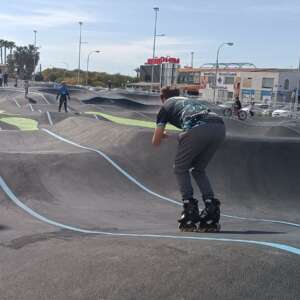
From today, and all of this week, officers from the Guardia Civil traffic department will be carrying out extra checks and surveillance on school buses.

During the five-day campaign, the officers will intensify inspections on both the vehicles and the drivers, verifying that the authorisations and documents that these vehicles must have to perform in service, verify that the technical conditions and safety elements of the vehicle satisfy the minimum standards required by the regulations, as the special requirements that the drivers must meet, such as appropriate driving licences and rest times.
Safety is the highest priority for this type of transport and the annual incident figures do reflect school transport as being amongst the safest ways for children to travel to school, especially if the number of deaths per traveller is taken as a comparison by kilometre travelled.
According to Gregorio Serrano, the director of the DGT, “the safe mobility of minors is one of the priorities of the DGT. Every day there are thousands of students who use the school bus to go to school and return home, so we have to keep checking that these trips are made safely.” In addition, “with this type of campaign, we remind parents of the right to demand from schools or parent associations that buses that handle school transport meet all the regulatory requirements to carry out this type of transport.”
Inappropriate speed and distractions are the main causes of incidents in which this type of vehicle is involved, so speed controls will be carried out focusing on this type of vehicle especially, as well as other factors such as not using a mobile phone or other devices whilst driving. Alcohol and other drug controls will also be increased amongst drivers.
Statistically, 90% of incidents involving school transport take place at the time of getting in or out of the vehicle or just in the immediate moments surrounding this time. In many cases these are caused by the child being distracted, or the fact that the school bus driver or the parents are not paying full attention. To avoid this type of incident, it is recommended that parents respect bus stops, allow enough time for taking and collecting children, and not waiting for the children on the other side of the road.
Due to the importance of seat belts in saving lives in the event of an incident, special attention will be paid to the use of these in school buses that have them installed. Although all new buses that enter service must be fitted with seat belts (since October 2007, registration is denied to any bus that does not have these restraint systems installed), older vehicles are still allowed to continue without seat belts installed, until time allows for their replacement. Currently, despite their importance, only around 60% of the school bus fleet have seat belts installed.
According to several studies, the use of seat belts in buses would reduce fatal injuries by 90% in the event of a head-on collision or rollover, since correctly fastened it prevents the projection of the passenger (adult or child) and reduces impacts on the chest, abdomen and legs
As is normal in this type of campaign, the Guardia Civil will also be supported by colleagues in the municipal and local police.
Safety Statistics
In 2016 (the last year with consolidated data) school buses were involved in 32 incidents (20 on interurban roads and 12 in urban ones), in which no one was killed but 17 occupants were injured.
According to a study prepared by the Traffic Association of the Guardia Civil about incidents and injuries of vehicles dedicated to school transport:
- The vast majority of them occur on conventional roads (65% last year).
- The most frequent type of incident is the fronto-lateral collision.
- Distraction and inappropriate speed appear as more frequent concurrent factors.
Educating on the School Bus
Trips from home to school can be a good time for the adult accompanying the children to remind them of some messages about road safety, such as:
- Never stop behind the bus.
- Wait for the driver’s signal and always cross at least three metres ahead.
- Inside the bus, stay seated and with the seat belt on, if it is installed.
- Do not run when you get to the bus, or when leaving.
- Obey the driver and the monitor.
In addition, parents should check the safety of the buses and coaches in which their children are travelling, request the centre hire buses with seat belts and check that a monitor accompanies the children during the journey.
Other Healthier Ways to get to School
In addition to the school bus there are other means of transport in which the students go to school: private car, public transport, bicycle or simply walking.
With the intention of promoting sustainable mobility from an early age, the DGT in collaboration with the Federation of Municipalities and Provinces is encouraging safer school roads, which favour and stimulate travel on foot, by bike or public transport to and from school.
Currently there are more than 100 municipalities in 35 provinces and approximately 300 schools that are working or already have safe school roads defined by the criteria.













